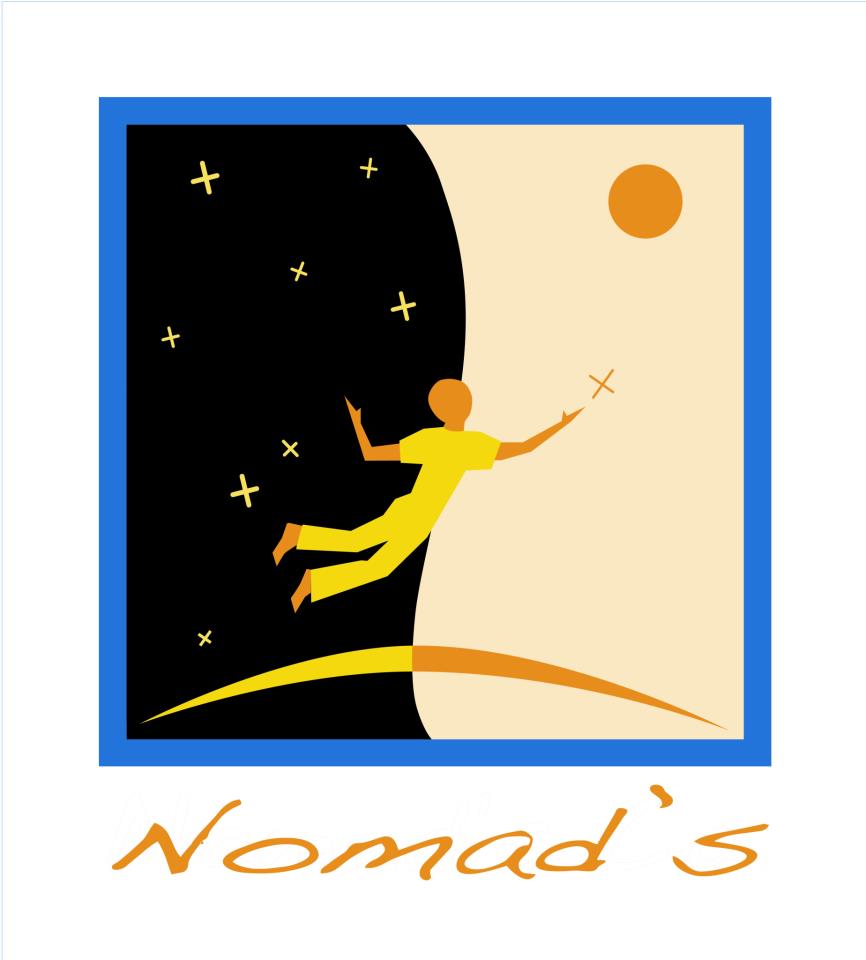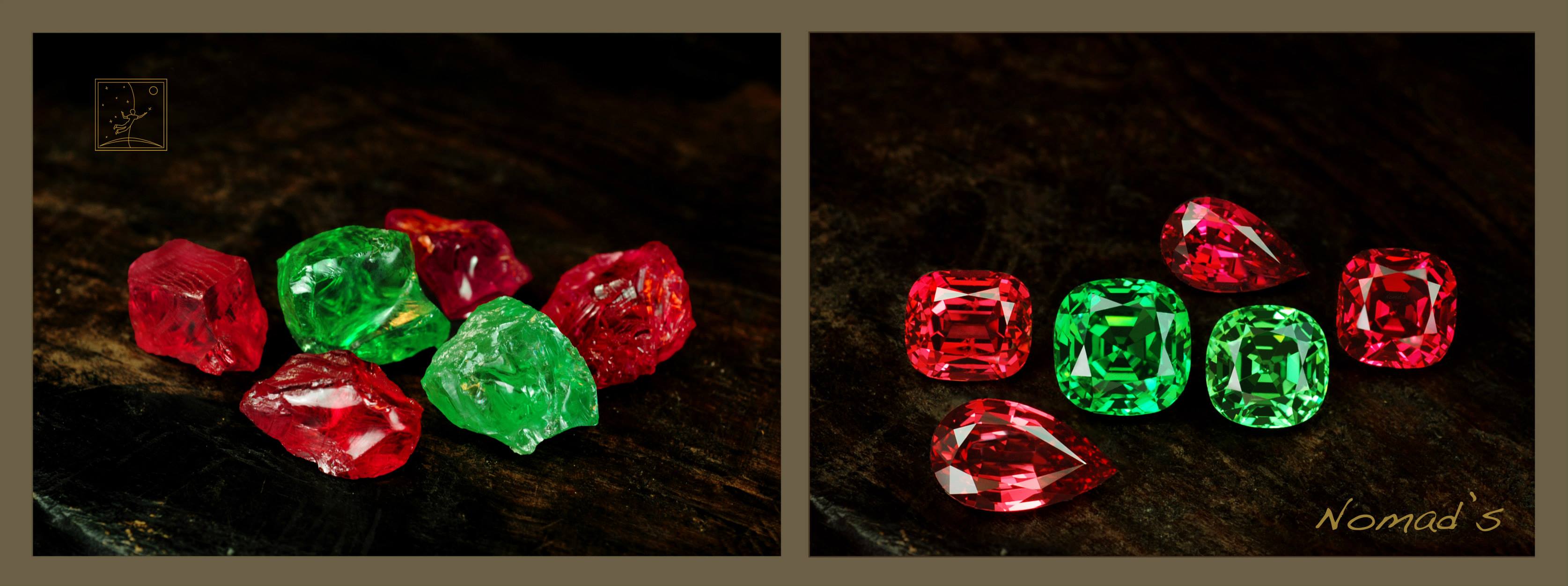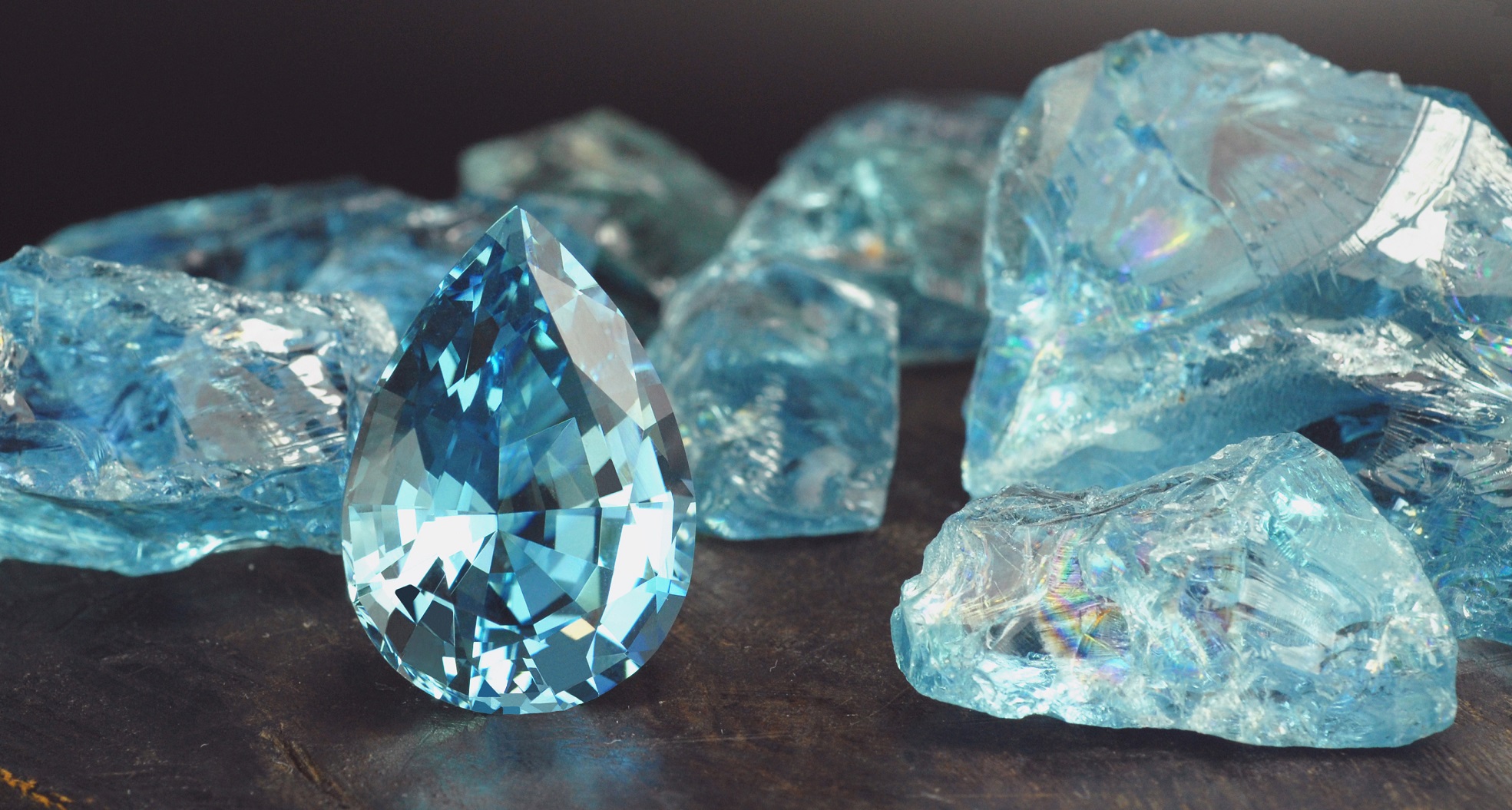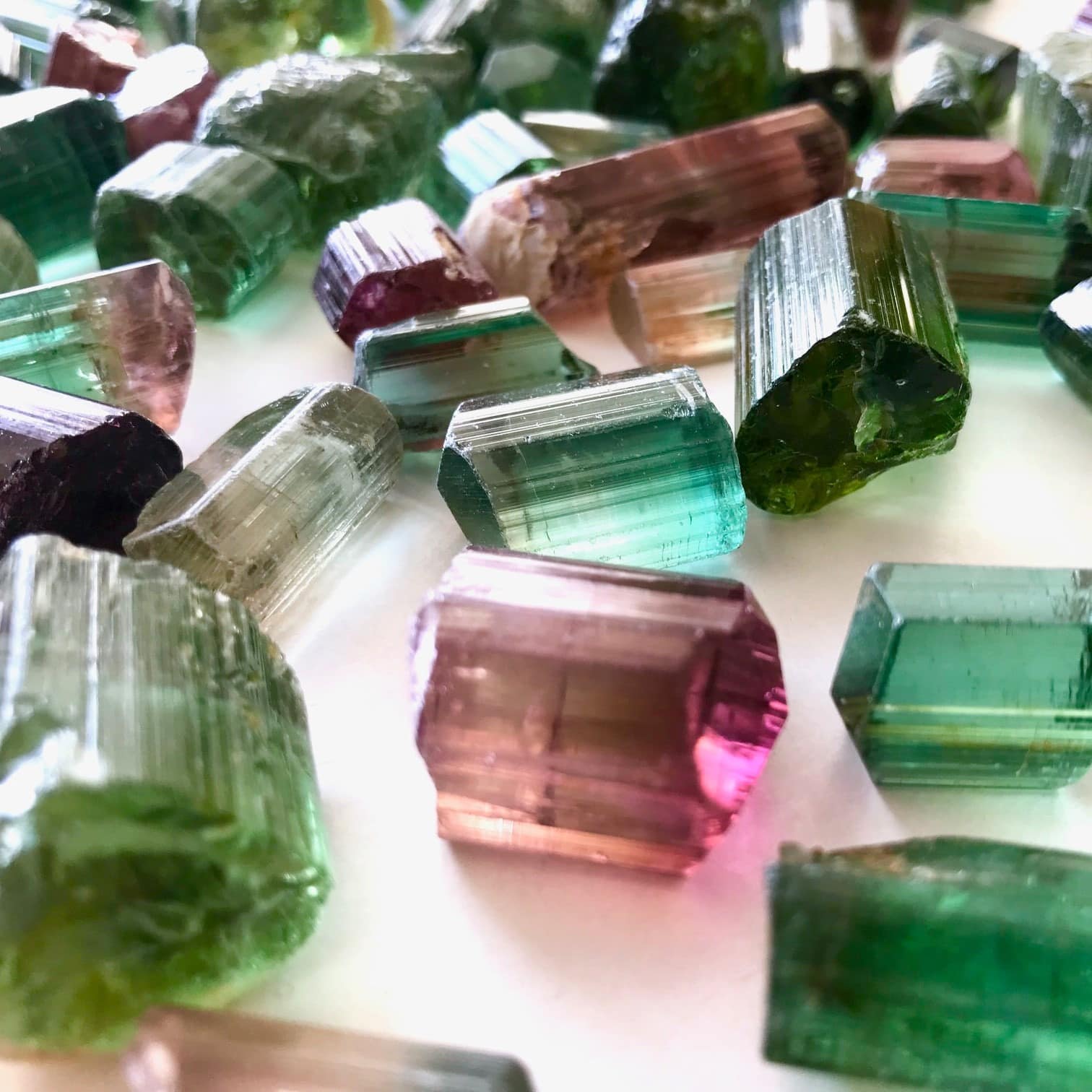For this fourth career meeting, I’m taking you to Thailand, in Bangkok, to meet Sébastien who works at Nomad’s. It took us a while to make this meeting happen because of his workload, but I am really happy to be able to offer it to you today.

Nomad’s, which specialises in the cutting and trading of gems, is well known for the high quality of the stones it sells. It is also, having met them during Baselworld, a happy tribe of terribly passionate people. I would like to invite you to meet one of them.
- Sébastien, can you introduce yourself quickly?
I’m 31 years old and I’m originally from the Paris region. I’ve been working at Nomad’s for 5 years.
- What job did you want to do as a child? How did your interest in gems develop?
As a child, I was already picking up pieces of quartz and other stones. I soon started collecting stones and reading all the gemology and mineralogy books I could get my hands on.
You see, I was a hopeless case for a long time!
- And finally, what is your job today?
Nomad’s, like almost all companies in the coloured stone field, is a small entity. So you have to be very versatile and able to take on several roles, from sales, stock management and requests to import-export issues around the world..
- Can you tell us about your initial educational background?
Um… my background was very classical. After a scientific baccalaureate, I went to university where I obtained a Master’s degree in Chemistry. My initial idea was to work in a gemmology laboratory, so I needed an excellent scientific background.
- And what specific training course in gemmology did you follow?
After my Master’s degree in Chemistry, I went to Gem-A, the oldest gemmological school. The main centre is in London but the school has many affiliated centres around the world, including two in France. It is in the one in Versailles that I prepared and passed my exam. The Gem-A teaching is complete and very demanding and I was lucky enough to have a truly extraordinary teacher: Mrs Fabienne Thouvenot.
- When did you decide to go abroad?
During my gemmology studies, we went on an organised trip to Thailand. I really liked the country and I told myself that I would go back there. Eventually I joined Nomad’s full time and was transferred to Bangkok.

Mahenge spinels and tsavorite garnets weighing between 5 and 10 carats. Photo: Nomad’s
- Can you tell us about your company and how it works?
Nomad’s was founded about 20 years ago by several university friends.
Our focus has always been a certain taste for the most beautiful colours and materials; magnified by an excellent cut. This last characteristic is often missing in coloured stones.
The operation of Nomad’s is relatively simple on paper: we buy rough stones, carefully selected by ourselves, then we cut them before offering them for sale to our customers in North America, Europe and Asia. As wholesalers, we supply professionals with a wide range of centre stones, pairs or sets. We work with a wide variety of gems: spinels, tourmalines, imperial topazes, garnets (demantoid, spessartite, grossular, rhodolite etc.), zircons, peridots, beryls, untreated rubies and sapphires..
Those interested can read more in the interview with my colleague Jazmin during Baselworld. This paper will be published in June in the Revue Française de Gemmologie.
- Let’s get to the heart of the matter: how did you get to this position, tell us about your career path?
I knew a Nomad’s employee long before I joined the company.
When she left the company (on good terms), she asked me if I would like the job. I agreed and sent my CV. The next day I was contacted by one of the Nomad’s partners who said, paraphrasing, “Still interested? Well, fine! Tucson starts in 3 days, get a plane ticket now and meet us there.”
I booked my plane ticket and was packing the next day. That was six years ago.
I hit it off with the rest of the team and ended up staying with the Nomad’s caravan, first part-time for international trade shows and then full-time, moving to Bangkok and throwing myself into the adventure.
- Let’s talk about your work, what does a typical day/week look like? And by the way, tell us a bit about your travels.
In Bangkok, the hours are typically 9.30am to 6pm Monday to Friday plus part of Saturday, but this can vary depending on events such as trade fairs or important exports, in which case we stay on our toes until the time we need to be there: I’ve been known to not leave the office until 9pm or 10pm.
Then there are the international trade fairs themselves. Usually we’re ready by 7.30am and it goes on until 7.30pm sometimes 9pm for the closures, when we have to do the exports and pack up.
It can be really intense with 15-20 minute breaks in the day and no more like the last GJX 2015 [one of the Tucson shows].
Finally, there are all the other side trips, between shows. Let’s just say I’m making full use of my passport!
To sum up, I prefer to break this down by month because the pace of work depends very much on our schedule:
January is dedicated to the preparation of Tucson and then to the USA for the show itself until mid-February. It is the big event at the beginning of the year and serves as a thermometer to judge the business climate of the new year in North America.
Tucson is simply indescribable. The atmosphere is absolutely unique, an incredible mix of everything imaginable, you meet a lot of interesting people. The atmosphere of the city is also fantastic with its restaurants and live bands playing almost every night. As you can imagine, this is my favourite show!
After Arizona, it’s back to Bangkok, and then a few weeks later, to Hong Kong for the March show. As for Tucson, Hong Kong sets the tone for the Asian market.
April is dominated by Baselworld, which is also an important event, very different from the others because it is very much oriented towards the very high end of the market. The beginning of the year is quite physically exhausting!
June is also important because of the JCK Las Vegas and Hong Kong shows. Generally speaking, activity continues until the beginning of July.
The year starts again at the beginning of September, again for the preparation and then the Hong Kong show in September which is the most important of the three HK shows.
Again, a special atmosphere, worthy of the biggest show in Asia. As the show is close to the airport, we also stay close to it. It feels like living in a spaceship for a week, because we hardly go out at all. It’s a different experience.
After Hong Kong, there are no more major shows for the year but there is a monumental amount of work to do until the end because of the holidays.

Aquamarines from Madagascar. The natural, cut pear weighs 37.60 carats. Photo: Nomad’s
- What is your favourite part of your job?
The obvious answer would be stones. And it’s true that I enjoy seeing new roughs and freshly faceted stones every day or so. I don’t think you can do this job without loving stones.
However, beyond the stones, I really enjoy the motley galaxy of people I get to know. This is much more important than the stones themselves in the end.
- What are the more negative, more boring aspects?
I don’t find my job boring at all! I’m lucky enough to do what I love. As for the negative… if I had to mention one at all… maybe the stress in certain situations? But this is not out of the ordinary in today’s working world and I don’t want to dwell on it.
- There are certainly aspects that the general public does not realise?
Honestly, I think that almost the entirety of our profession is unknown to the general public. Most people can’t imagine the work that went into it to get to the end result that we can admire.
- How do you see your daily work?
Ethics and integrity are paramount in our field of activity where trust plays a key role.
This starts with total transparency regarding any treatments.
We prefer untreated materials but we sometimes heat certain stones ourselves, such as tourmalines or aquamarines for example. Each heated stone will be clearly mentioned as such on our labels and the customer will always be informed.
Over the years, we have also built up an important network and several partnerships with mining companies to guarantee our customers the origins of our stones.
Nomad’s has also signed supplier charters with several of our major clients, committing us to a strict code of conduct including environmental standards, non-discrimination, no child labour, freedom of association etc. We have regular monitoring audits.
Finally, we have always been pleased to work with the various major laboratories and gemmological schools. We can mention the SSEF, the GIA, the AGL, the GGTL, Lotus Gemology, Christian Dunaigre, etc.
- How is the security of goods managed, particularly at trade fairs?
Of course, security is a major concern and risk management is always on the back burner.
Theft is a problem during trade fairs, and unfortunately stories of this type happen all too frequently. Our fellow diamond dealers are sometimes victims of substitution between a diamond and another of lesser quality, or even of a CZ (synthetic zirconium oxide, nda). For coloured stones, this type of criminal operation is much more complicated, but we must always keep an eye open, which is not always easy during busy times.
That said, the fairs are generally well protected with a good police presence. In Tucson, for example, the city police and sheriff’s department monitor entrances and exits and organise 24-hour patrols.
- How are business relations in such a multicultural business area?
Without too much difficulty. We all have a passion, at least a common interest. I think the energy and the very positive side of Nomad’s in general contributes to the phenomenon: by keeping a good attitude, you naturally attract positive people; a kind of gravitational field of good humour. Perhaps the glasses of port and the chocolates during the shows also contribute.
- Do you have a story to tell us?
A good part of my career is a series of anecdotes; my recruitment is the archetype. Here’s another one, among many others: during a trade fair in Hong Kong, a few years ago, a group of Chinese buyers came to our stand. They stayed all afternoon, looking at every peridot in the collection with a magnifying glass. Then they left, telling us they would come back later. They did come back…and bought all the stones.
- So, how do you relax when you have such a busy job?
The team always shares great dinners after the shows and there are always Nomad’s parties during Tucson. Nomad’s is like a big family, a little dysfunctional at times, but always great. Which explains why I don’t really want to quit my job.
- By the way, do you really quit?
Hardly, but you get there. The team hangs up completely in the summer and everyone takes a six-week holiday; away from the stones.
*****
I sincerely thank Sébastien for the time he took to answer my many questions.
See you soon for a next portrait!






